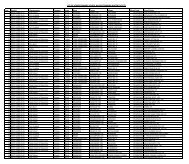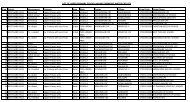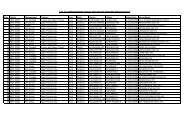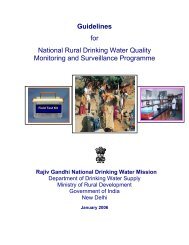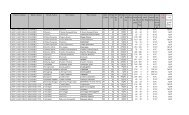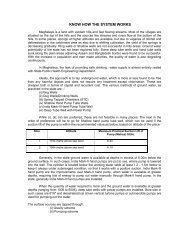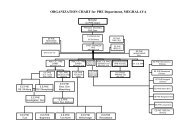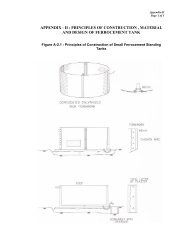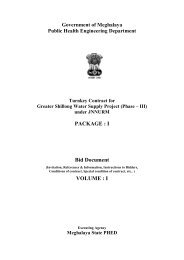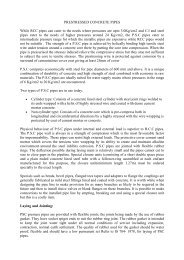PACKAGE : I Bid Document VOLUME : II - Public Health Engineering
PACKAGE : I Bid Document VOLUME : II - Public Health Engineering
PACKAGE : I Bid Document VOLUME : II - Public Health Engineering
Create successful ePaper yourself
Turn your PDF publications into a flip-book with our unique Google optimized e-Paper software.
Where joints are left uncovered until after testing, sufficient materials should be<br />
backfilled over the centre of each pipe to prevent movement under the test pressure.<br />
The contractor shall make his own arrangements to procure necessary equipments,<br />
apparatus etc., required for testing and shall provide necessary labour for filling<br />
with water the length of pipes to be tested, fixing all apparatus and for carrying on<br />
the testing operations until the length of pipe, specials and connections are firmly<br />
passed by the Engineer. If the testing apparatus and equipments are available with<br />
the employer, they can be hired by the contractor at usual conditions and charges.<br />
The length to be tested shall be provided with two blank flanges fastened on the<br />
usual manner by collar bands and bolts to the end pipes or if the length to be tested<br />
shall have a sluice valve at each end, such blank flanges may be dispensed with.<br />
The length of pipes to be tested shall first be filled in with water from a higher<br />
section of pipes already laid or with clean water obtained from a service connection,<br />
as the contractor may arrange with the approval of the Engineer.<br />
Before the actual testing pressure is applied, any air which has logged in the length<br />
of pipe to be tested shall be got rid of, by screwing on at the highest part of the<br />
length of pipes or temporary air valve, or by opening a temporary stop-cock or by<br />
other means as the Engineer may direct.<br />
The test pressure shall not be less than 10 kg/cm 2 .<br />
Each pipeline or section thereof, shall be filled with water and all air removed. The<br />
pressure in the pipelines shall be raised steadily until the site test pressure is reached<br />
in the lowest part of the section. This pressure should be maintained, by pumping if<br />
necessary, for a period of not less than 1 hour. The pump should then be<br />
disconnected and no further water permitted to enter the pipeline for a period of<br />
1 hour. At the end of this period, the reduced pressure in the pipeline should be<br />
measured, the original test pressure restored by pumping and the loss measured by<br />
drawing off water from the pipeline until the pressure has fallen to match the<br />
reduced pressure previously noted. The loss shall not exceed 0.02 litre per mm<br />
diameter per kilometer per 24 hours for each bar of head applied. If the pipeline<br />
fails to pass the test, the faults shall be located and repaired and the pipeline retested<br />
until it passes the pressure test. All exposed pipe, fittings, valves and joints shall be<br />
visually inspected during the tests.<br />
If the length of pipeline under test is found to be satisfactory and no leaks or<br />
sweating are found at the pipe joints or at the joints of specials and connections,<br />
then this length of pipeline will be passed by the Engineer.<br />
But should any pipe, joint, special or connection be found to sweat or leak,<br />
contractor shall make good at his cost such defective joints and the length of pipe<br />
line shall be retested until all pipes, joints specials and connections are found to be<br />
satisfactory.<br />
GTS : General Technical specification. Page 89



